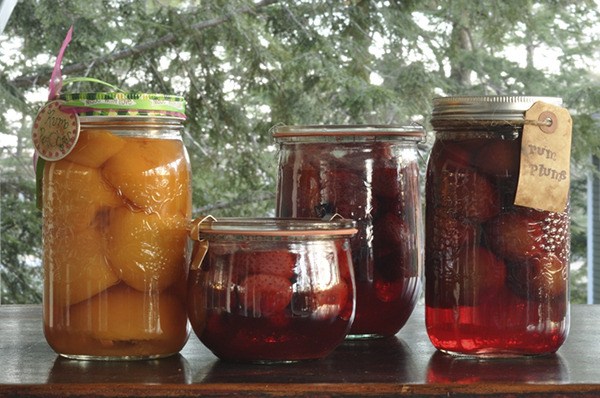It’s time to can tomatoes and peaches, freeze green beans, dry or freeze herbs and make jelly!
What a fantastic time of year. Because of the warmer temperatures on the peninsula this summer, many gardeners already are gathering tomatoes and picking green beans in large enough quantities to preserve them for later use.
If your garden is producing delicious fresh vegetables for the table but not enough to preserve, take advantage of the local harvest available at farmers markets and local farm stores.
Years ago people preserved food primarily because it was an economical way to provide nutritious and tasty food for use during the winter months. Today, people are returning to preserving their own fruits and vegetables for that reason and because they are concerned about food quality.
When you preserve your own food you know the ingredients! Also, for many, the “beauty” of a jar of home-canned tomatoes or peaches is reason enough to get out the canning equipment.
Get busy
So, how do you get started? It is easy! Decide what you want to preserve and what method you want to use. There are several methods of food preservation: water bath canning, pressure-cooker canning, freezing, drying, pickling and jam/jellying.
If you do not have time to make jam or jelly when the fruit is freshly available, it can be frozen and later made into jam or jelly. Possibilities are endless.
Each method has its own specific equipment and process. They all have the following three things in common.
Always:
• Use the freshest unblemished vegetables and fruits available.
• Thoroughly wash all vegetables and fruits.
• Sterilize all equipment and supplies.
Safety first
Serious illness can result when proper food handling and food preservation procedures are not followed. It is critical that you follow the steps involved for the preserving method you choose.
There are pros and cons for each method. If food preservation is new to you, read about each process before you decide which best serves your interest.
Do some research to determine if there is a variety of the fruit or vegetable that is better suited when preserving. For example, a pickling cucumber is more likely to retain its crisp quality when pickled than will a salad cucumber; some herbs retain more robust flavor when frozen rather than dried.
To address the renewed interest in food preservation, Washington State University has made available a series of online instructions for each of the various preserving processes. This is an outstanding resource whether you are new to food preservation or would like a refresher. There is no cost, just log into http://preservesummer.cahnrs.wsu.edu.
If you are interested in hands-on classes or a pressure-cooker inspection, contact the Clallam County Extension Office at 417-2279. If they are not offering classes, they likely will know what is being offered through other Extension Offices.
Online information also is available at the National Center for Home Food Preservation at http://nchfp.uga.edu.
Now is the time to preserve food for later use. Fruits and vegetables are at their peak and the “how-to” information is readily available! You’ll be glad you preserved it.
Judy English is a Washington State University certified, Clallam County Master Gardener.


